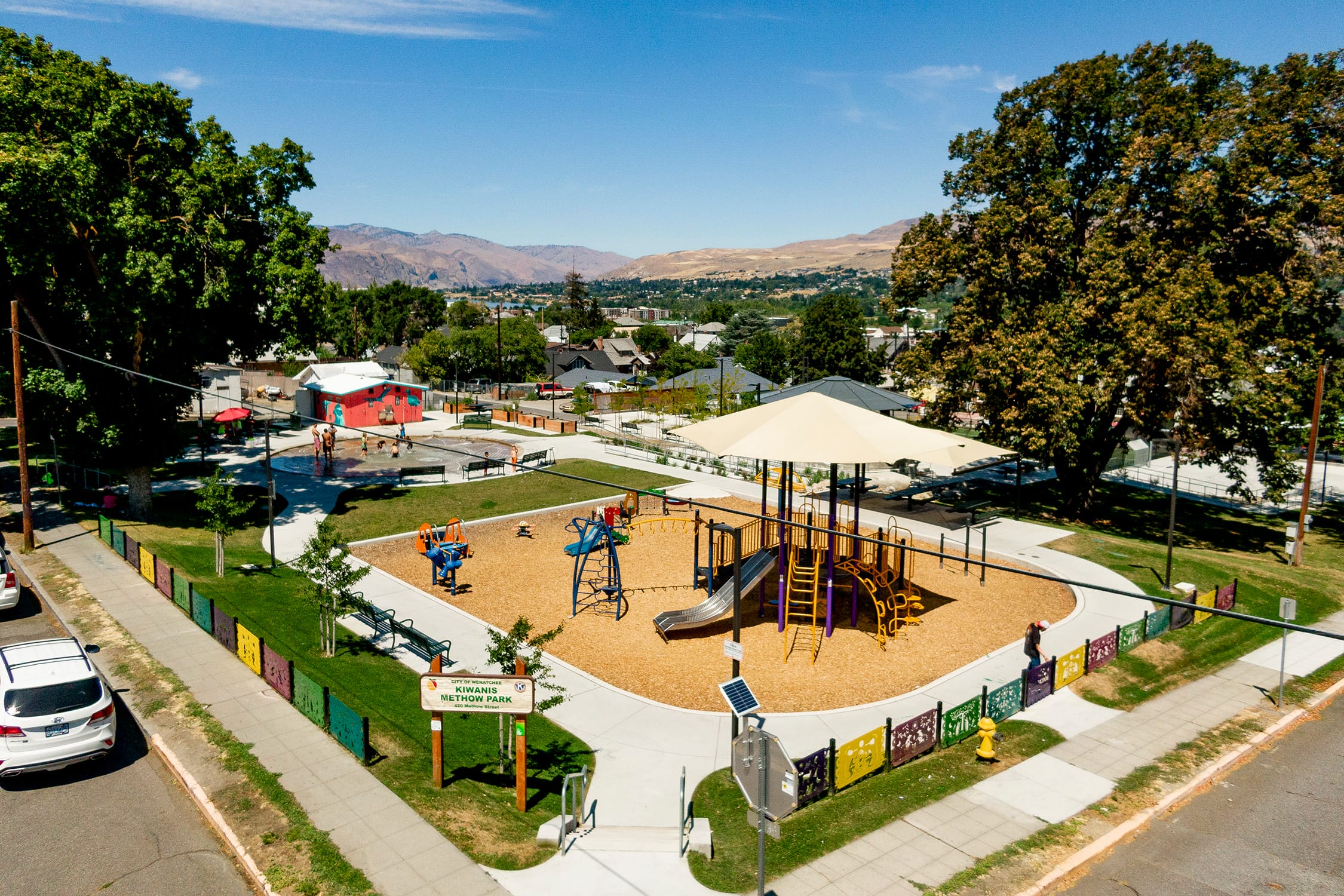We know that green spaces are good for our mental and physical health. And we know that they have the power to combat the effects of climate change by capturing rainwater and carbon and cooling our cities. But did you know parks, trails, public lands, and schoolyards often facilitate social and environmental justice, as well? This roundup of TPL projects exemplifies just how much our green spaces can achieve—often simultaneously.
Ala Kahakai National Historic Trail (South Kona, Hawai‘i)
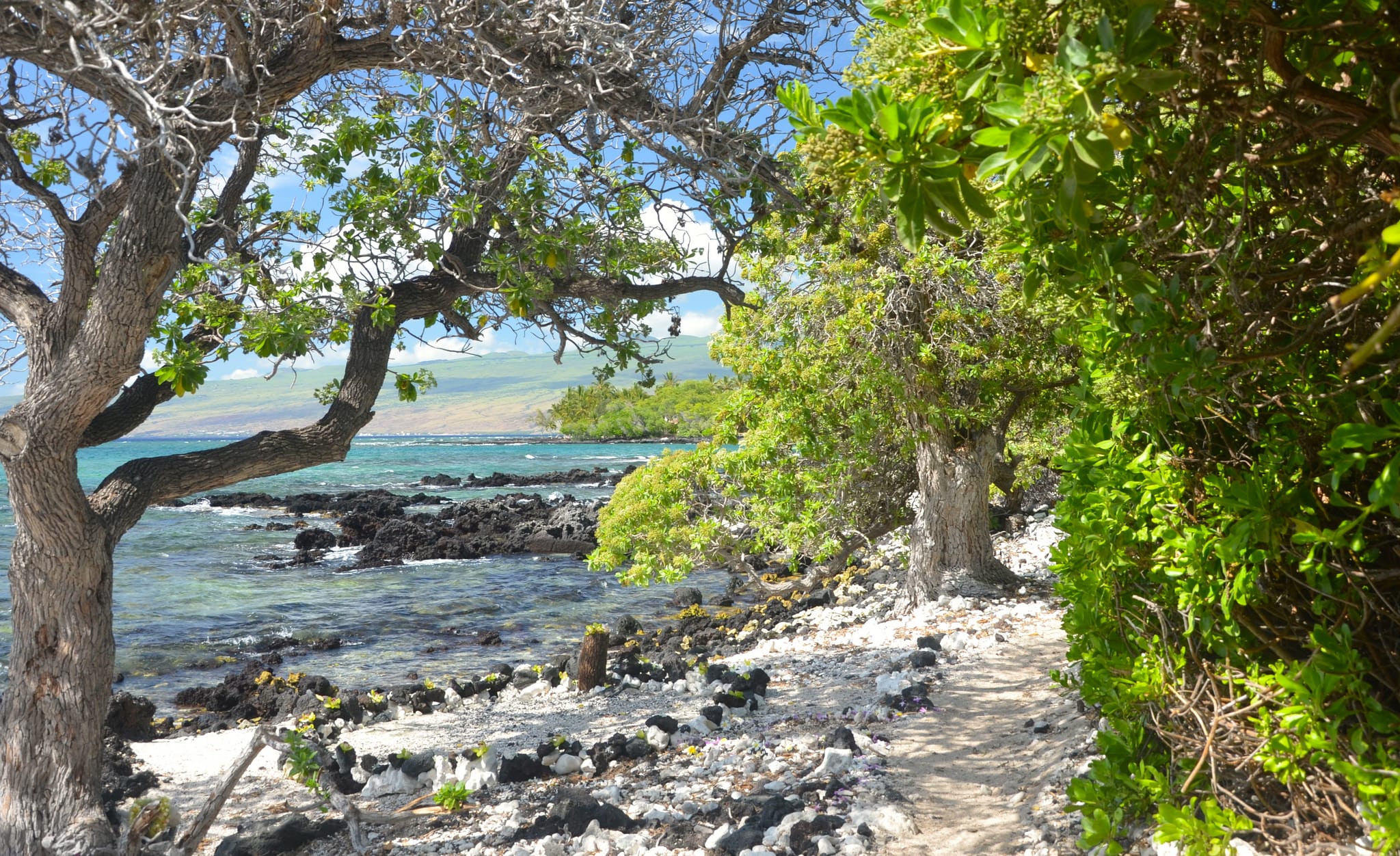
Photo: gail/Flickr
When TPL purchased the 59‐acre Kauleolī fishing village in 2016, we protected more than a trail; we protected an important part of the island’s history. The site is part of the Ala Kahakai National Historic Trail, a 175-mile path that links four National Park Service units and numerous wahi pana (sacred or storied places) significant to Native Hawaiian history and culture, such as Hawaiian house platforms, traditional agricultural areas, and salt-making ponds. Developed in partnership with Ala Kahakai Trail Association, which has a descendent-led strategic plan, the trail’s preservation also protects—and raises awareness about—crucial habitat for threatened and endemic species such as green sea turtles, migrating humpback whales, and the orangeblack Hawaiian damselfly. Extending public access ensures the continuation of the stories, traditions, and life connected to this treasured South Kona landscape. Support our work in Hawai‘i.
Atlanta BeltLine (Atlanta, Georgia)
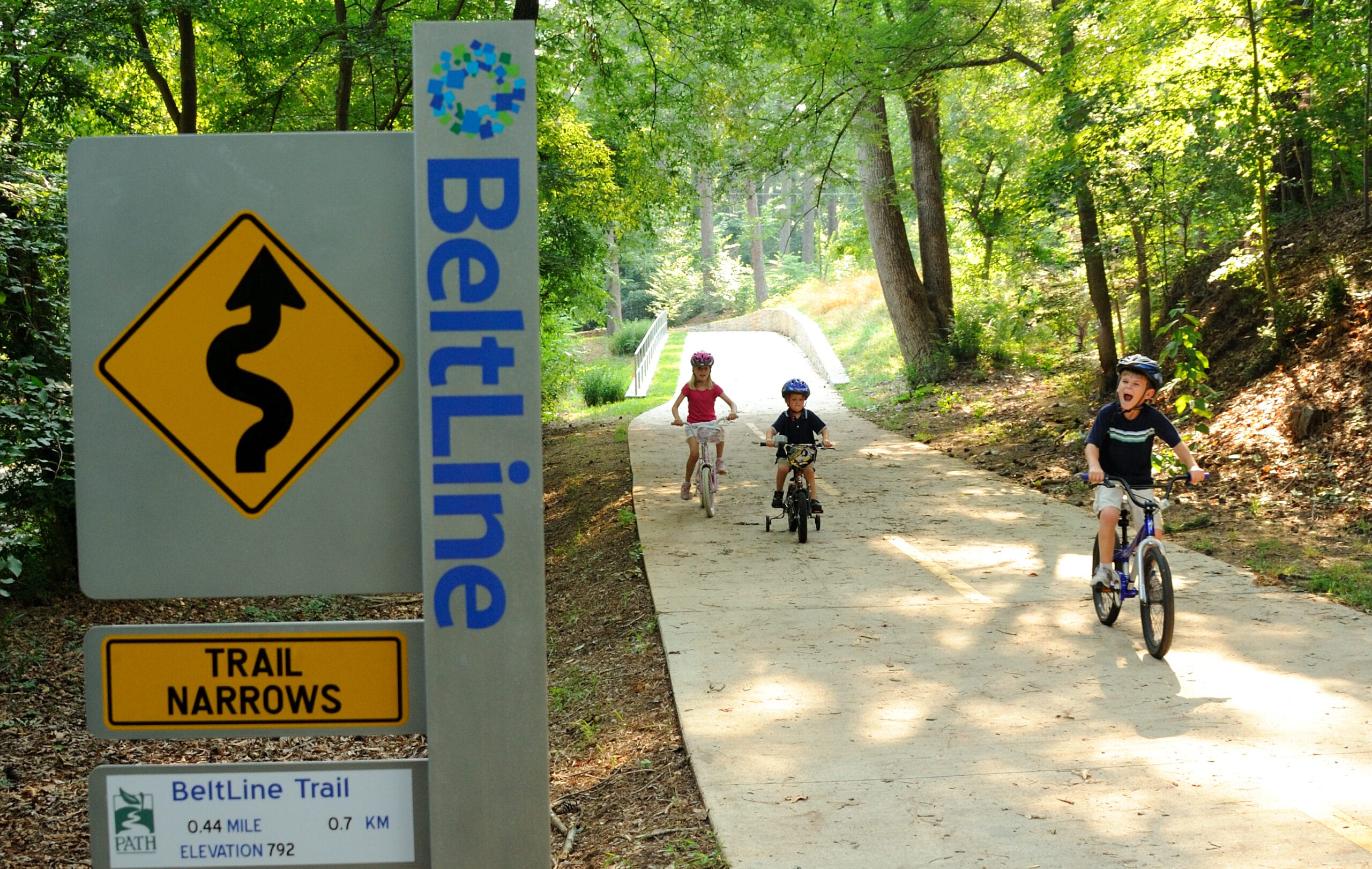
Photo: Darcy Kiefel
In 2005, TPL joined in creating the Atlanta BeltLine greenway along 22 miles of abandoned railway, passing through 45 neighborhoods and including a host of parks. It’s one of those ambitious, far-reaching projects that not only improves access to green space—and all the health benefits that come with it—but also connects communities and people, offers carbon-free alternative transportation options, and combats the effects of climate change, such as air pollution and warmer cities. Plus, the project is expected to generate more than $20 billion in new economic development over its first 25 years. “People throw around the word transformational . . . but the BeltLine is truly that. Atlanta is not a pedestrian-friendly city, historically. Well, that’s evolved,” says P. Russell Hardin of the Robert W. Woodruff Foundation, a private foundation that seeks to improve the quality of life in Georgia. “The BeltLine will continue to ensure that Atlanta densifies and is a place where you can live without owning an automobile. And boy, we sure weren’t that 10 years ago.” Support our work in Georgia.
Heat Response (Philadelphia, Pennsylvania)
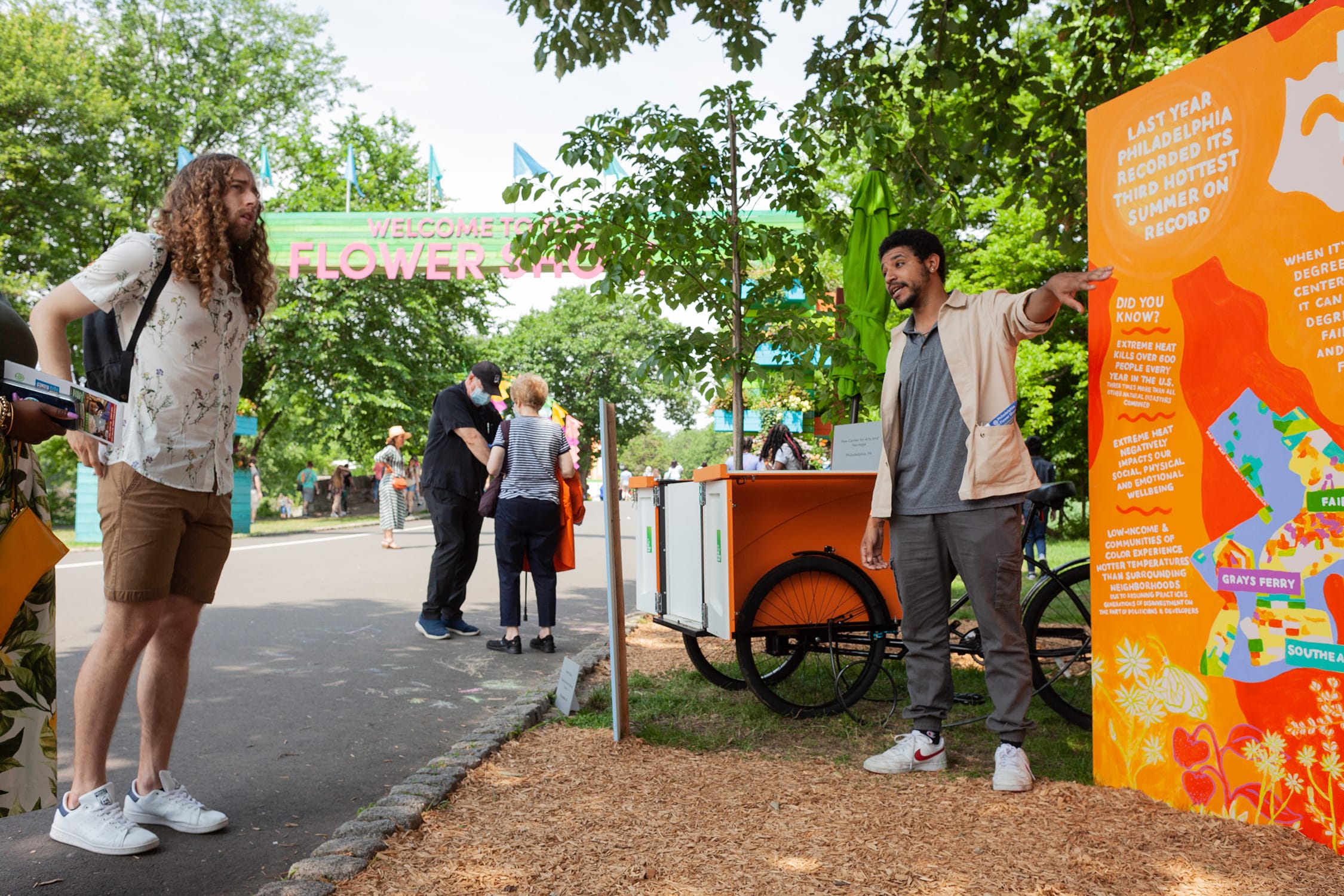
Photo: TPL staff
Across Philadelphia, extreme heat disproportionately impacts low-income communities, often communities of color. This is an inequity that influences their health, safety, and daily lives. Our Heat Response project spent two years engaging community members in three Philly neighborhoods—Fairhill, Grays Ferry, and Southeast Philadelphia—to create public art that addresses the issue of urban heat and possible solutions. A team of four local artists, supported by renowned artist Eve Mosher as well as TPL staff and volunteers, engaged residents on the topic of environmental racism through art, conversation, and community building. The project began shortly after COVID-19, a difficulty that further highlighted just how valuable green spaces are for gathering in times of crisis. Support our work in Pennsylvania.
India Basin Waterfront Park (San Francisco, California)
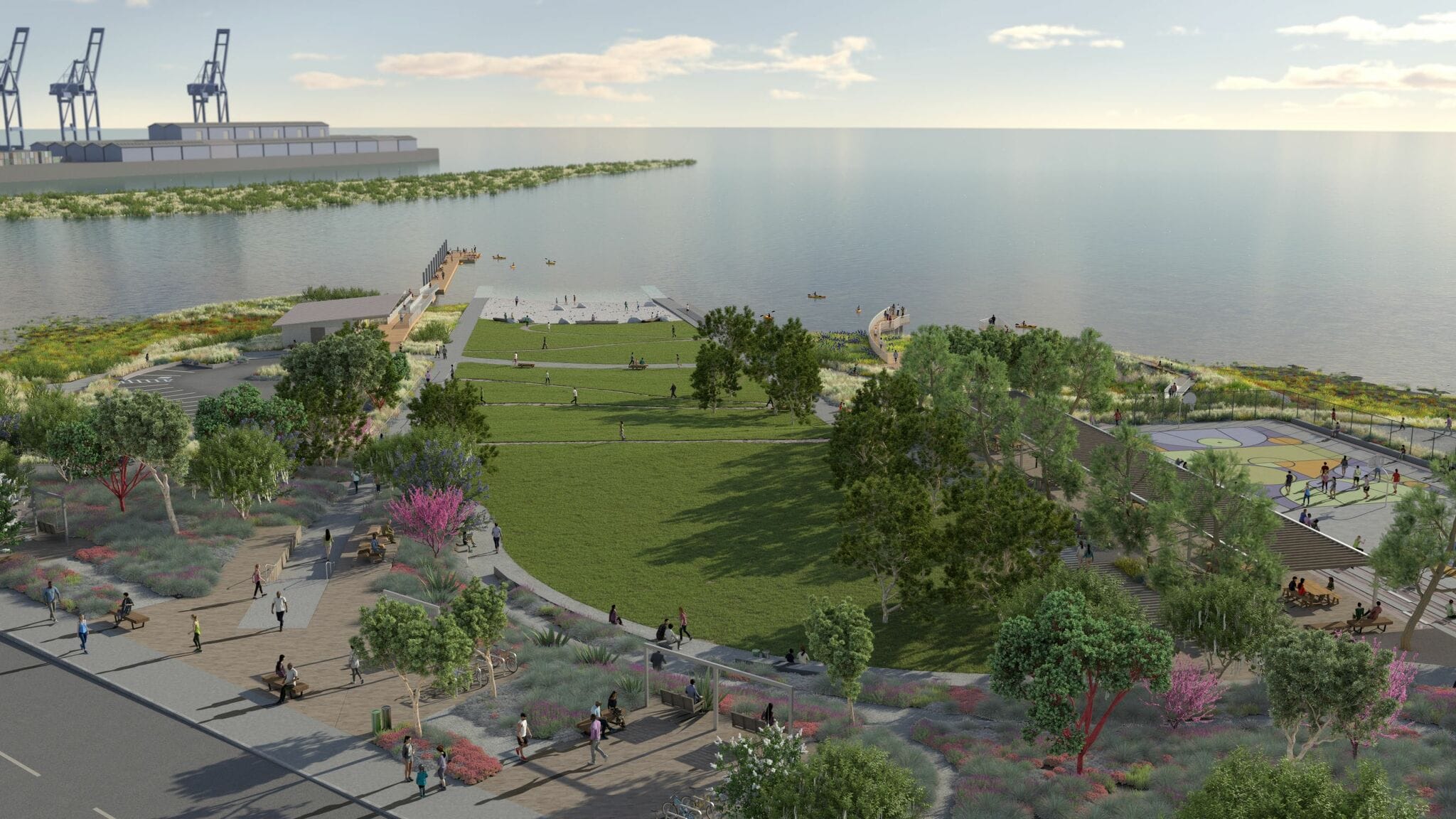
Rendering: San Francisco Recreation and Parks Department
The planning for this transformative new park will bring miles of waterfront trails, acres of restored coastal habitat, and plenty of recreation opportunities to a historically underserved area. But it’s pushing even further, ensuring people who live in the nearby Bayview–Hunters Point communities will profit from the park professionally and economically: the project’s Equitable Development Plan includes job training for those interested in careers as laborers, with project-specific opportunities prearranged with local unions and contractors. “If you don’t address equity, you’re not going to move the needle on climate or environmental justice,” says Jackie Flin, executive director of the A. Philip Randolph Institute San Francisco, a social-justice organization that is working with TPL to shepherd the project. Support our work in California.
Kiwanis Methow Park (Wenatchee, Washington)
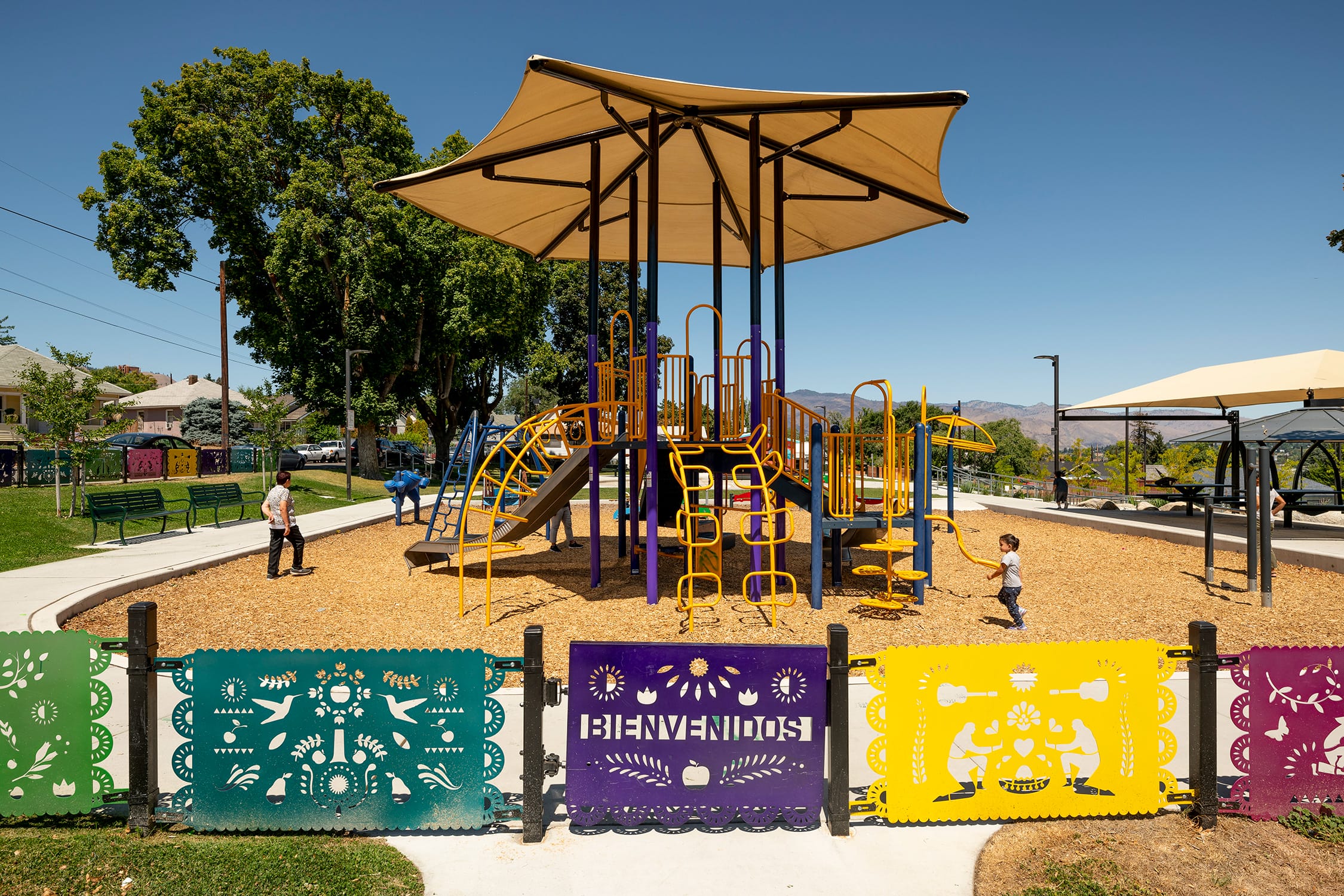
Photo: Stuart Isett
What started as an effort to improve an existing green space in central Washington turned into a powerful catalyst for community action: Teresa Bendito, a community organizer who helped TPL gather resident input for Kiwanis Methow Park’s renovation, says she and neighbors realized during planning that they were talking about more than just a park: “This is connected to our housing, to our health and well-being,” she says. After updating the park’s design and programming, residents began advocating for change beyond their immediate neighborhood, organizing a Latino legislative day at the state capital and get-out-the-vote rallies—tripling the community’s Latino voter turnout in the 2018 midterm elections. The park (also pictured at the top of this story) played an important role during the COVID-19 pandemic, as well, offering a safe place to gather outdoors, and local health fairs held in the park connected residents and undocumented people to essential health resources. Support our work in Washington.
L Bar Property (New Mexico)
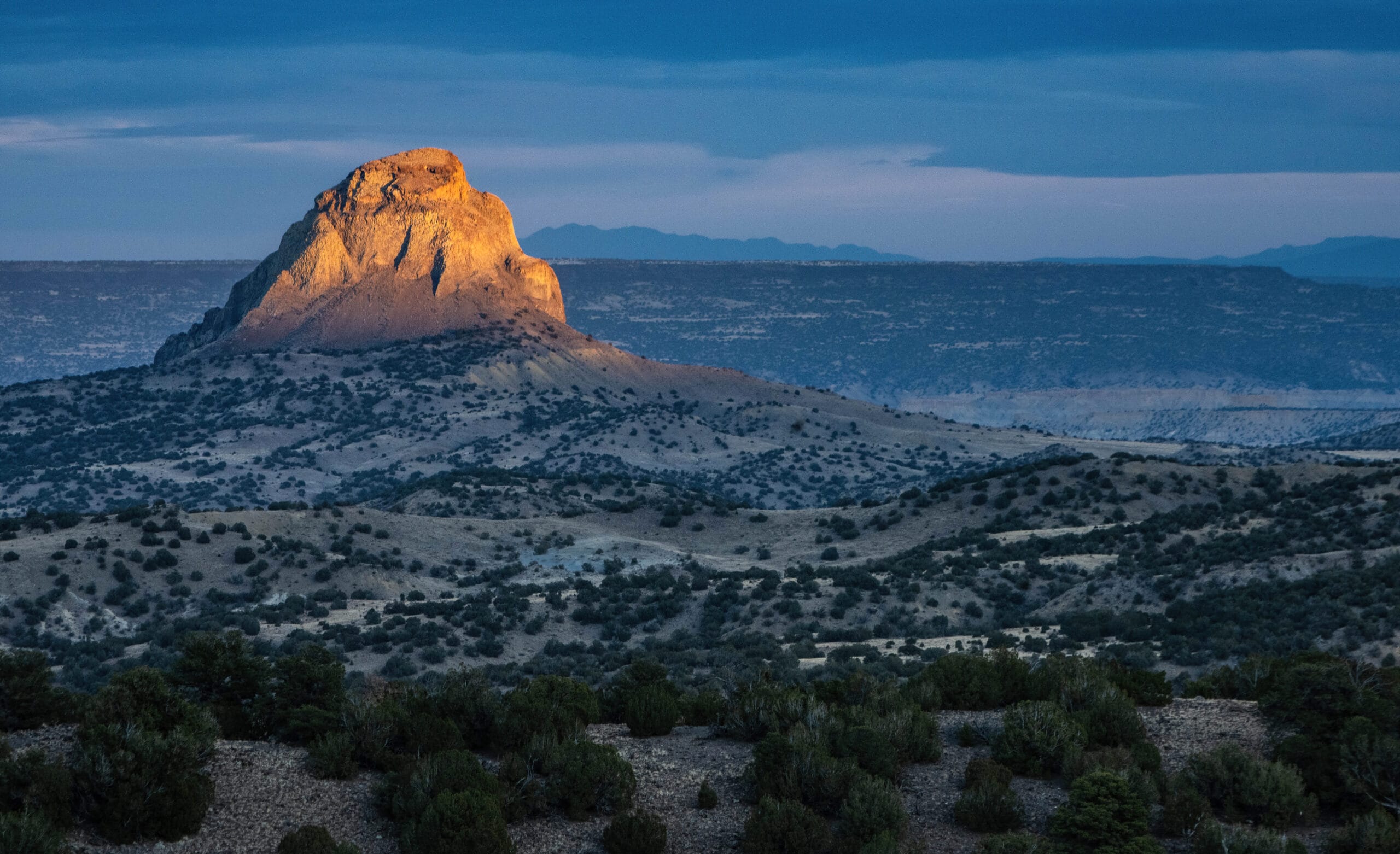
Photo: Dave Cox/Mountain Media
The acquisition of the 54,161-acre L Bar property in New Mexico has plenty to offer human visitors—hiking, hunting, and birding—and wildlife, which will benefit from protected habitat and uninterrupted migration corridors. But the advantages don’t stop there: as part of the Mount Taylor Traditional Cultural Property, the area is also rich with Native American history and considered sacred to as many as 30 tribal communities. What’s more, an ethnographic study can now be conducted on the land, which will help identify and preserve important Indigenous routes and cultural sites. In an exciting development, New Mexico Senator Martin Heinrich, who calls L Bar “the single greatest addition to public lands in New Mexico in a generation,” recently announced that funding has been secured for this effort. Support our work in New Mexico.
Mink Brook & Wolcott Community Forests (New Hampshire & Vermont)
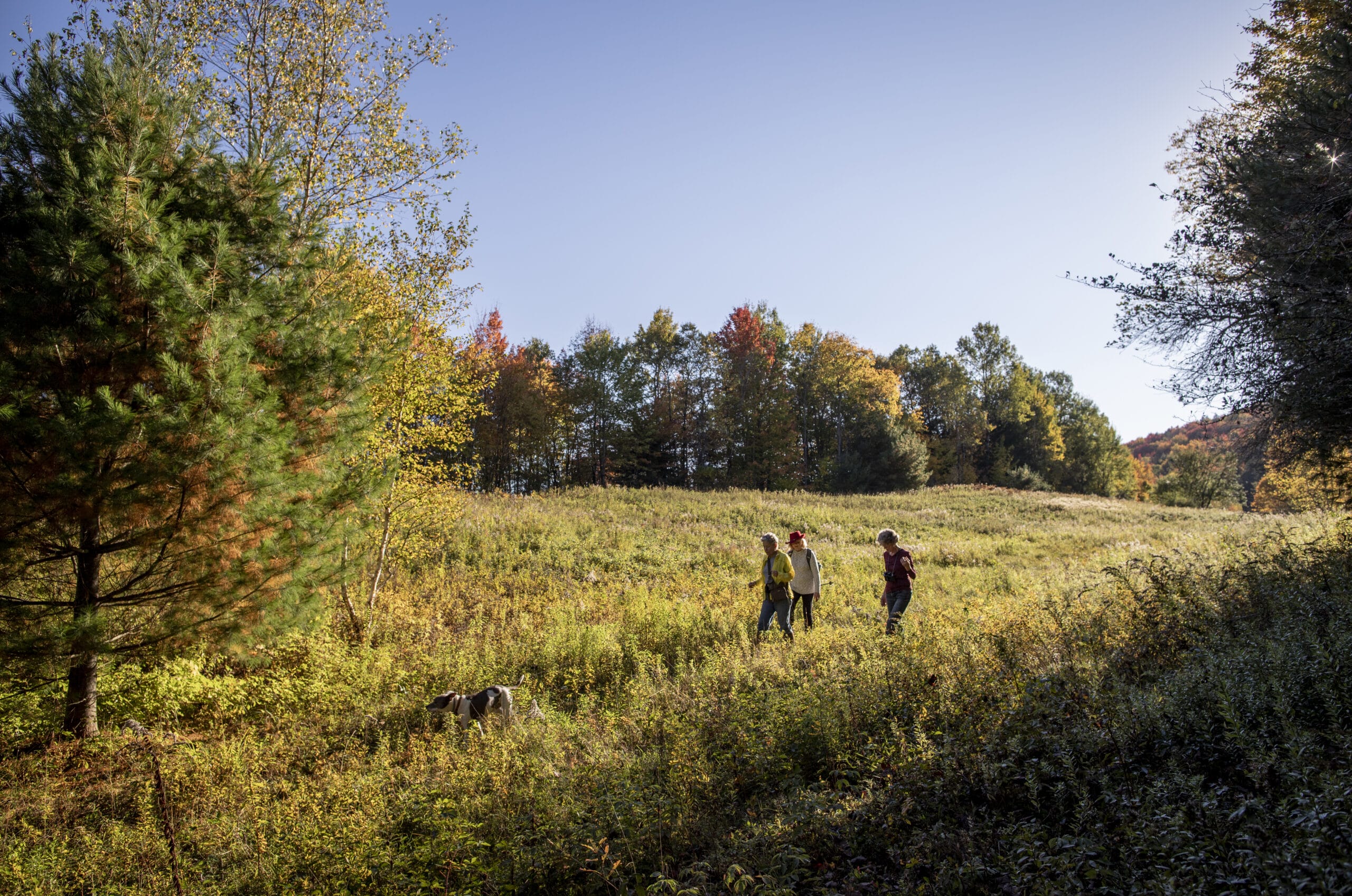
Wolcott Community Forest. Photo: Chris Bennett
At Wolcott Community Forest in Vermont, TPL is embarking on a dual-goal project: conserving land and providing affordable housing in the same effort. The proposed forest will protect headwaters along the Lamoille River—a boon to climate resilience and local recreation—and, as part of the purchase agreement, TPL will donate up to two acres on which a duplex will be built in partnership with Lamoille County Habitat for Humanity. This will provide two families at or below 80 percent of the median income for the county with an affordable place to live near an elementary school and a community forest. Bonus: high school students from Green Mountain Technology and Career Center, who are helping with construction, will gain hands-on experience in a lucrative and in-demand field.
Similarly, at Mink Brook Community Forest in Hanover, New Hampshire, TPL worked with residents to create a new community forest with workforce housing baked into the plan. The forest, which is managed for sustainable timber harvesting and flood resilience, covers 253 acres including trails and wildlife habitat, with a nearby 5-acre parcel set aside for residents who are hard-pressed to find housing in a town with a median home price of over $1 million. (Note: this differs from affordable housing in that it’s aimed at those earning a moderate income who are still priced out of their local market.) TPL donated the acreage to the Town of Hanover a year ago; after the passage of necessary zoning amendments and the identification of a development partner, building will commence, and the site will eventually host a cluster of small cottage-style houses. Support our work in New Hampshire and Vermont.
New York Community Schoolyards™ Projects (New York, New York)
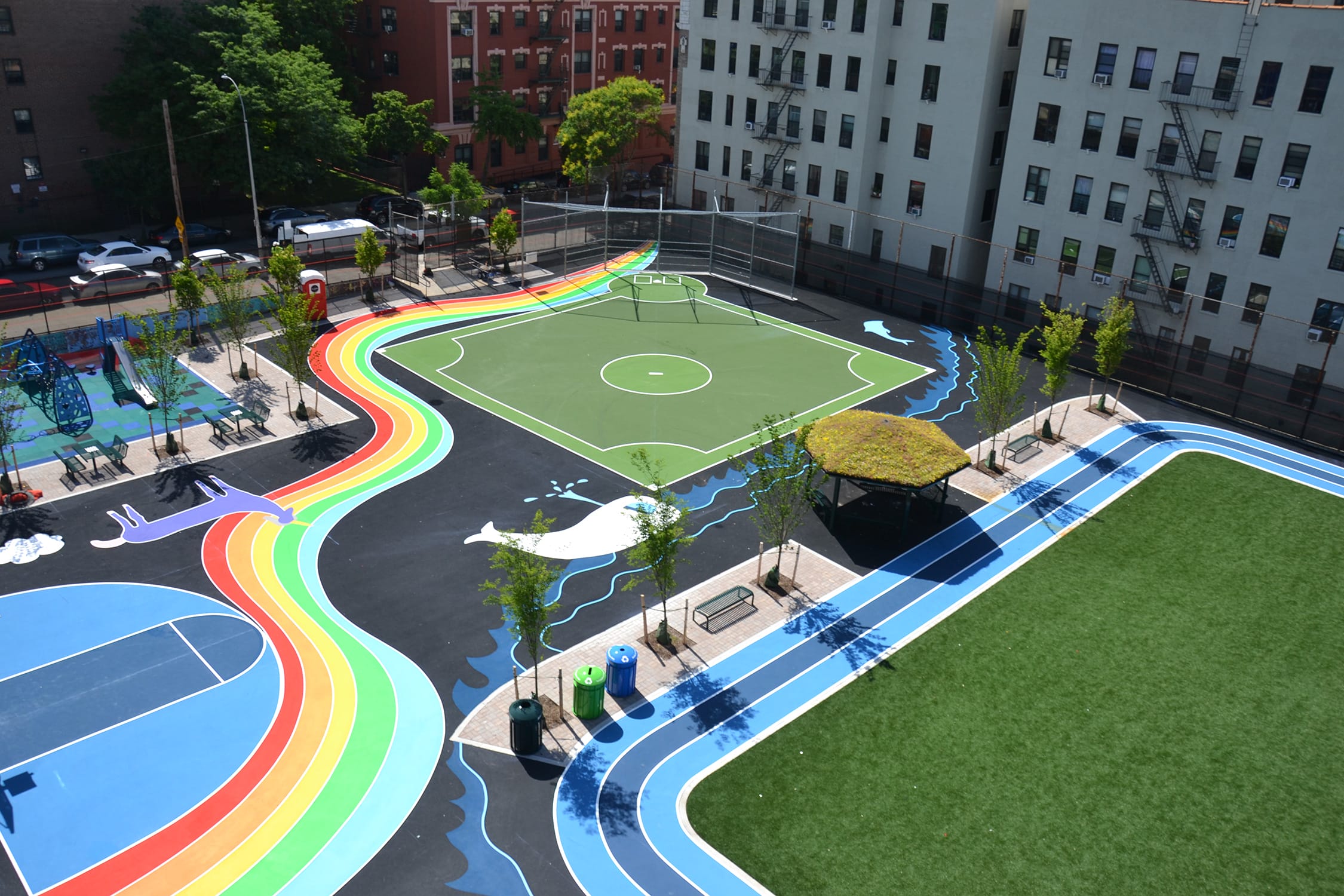
P.S. 384 after renovation. Photo: TPL staff
Trust for Public Land has been transforming playgrounds since our first schoolyard project in Newark, New Jersey, in 1995 and in New York City since 1996—with similar projects nationwide and ambitious plans ahead in Los Angeles. More than places to play, these schoolyards become undercover climate superheroes, capturing stormwater, reducing flooding and pollution, and lowering urban temperatures. They also become community parks, staying open to neighbors after school hours and on weekends, often in communities of color or where residents have been historically underserved when it comes to green space. Mary Alice Lee, director of TPL’s NYC Playgrounds program, says its goals have expanded strategically over the years to answer emerging community and environmental needs. (Humble brag: Lee was awarded the American Society of Landscape Architects’ Olmsted Medal in 2021, given for visionary environmental leadership.) Support our work in New York.
South Oak Cliff Renaissance Park (Dallas, Texas)
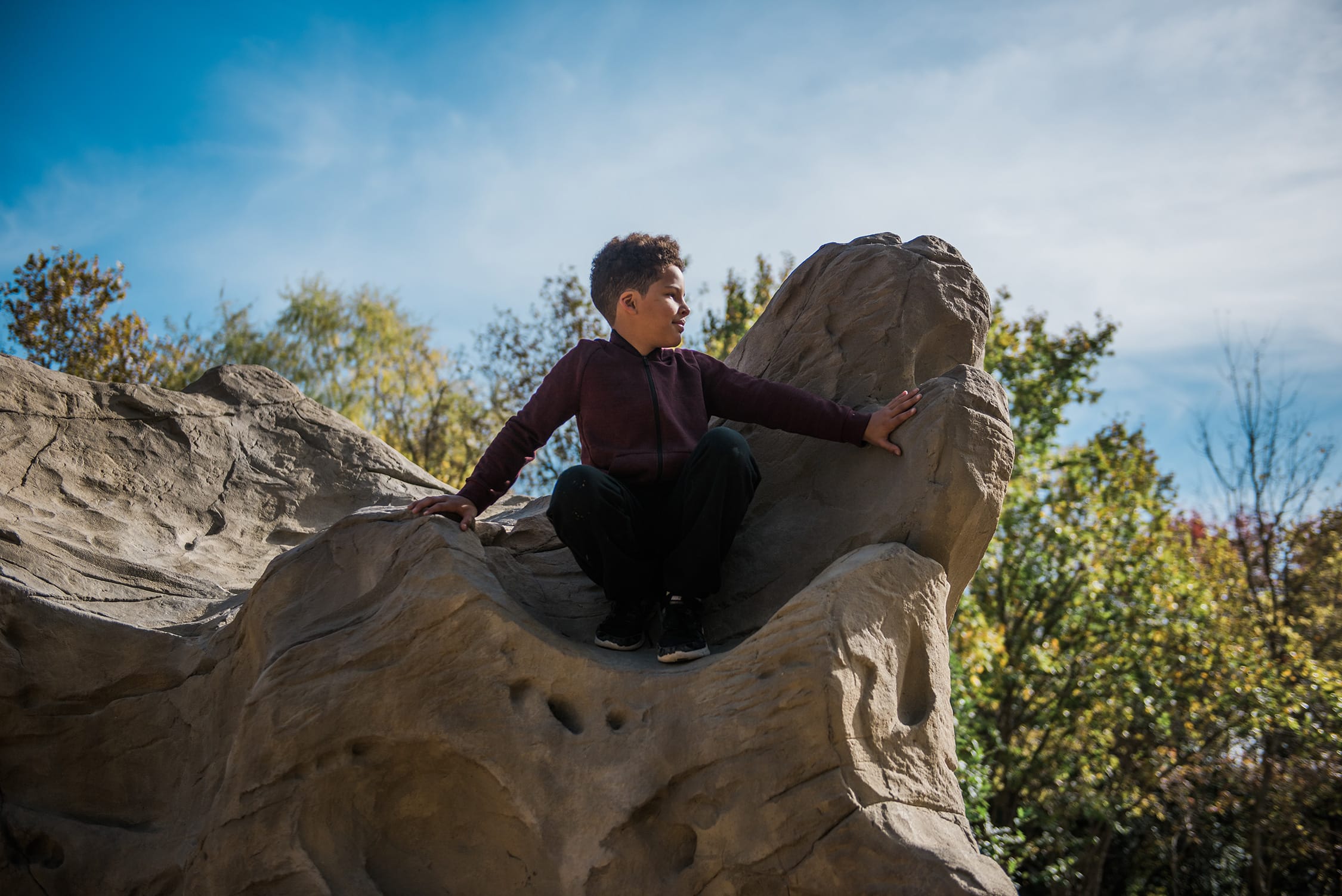
Photo: Brittany Gryder
A mural at South Oak Cliff High School in Dallas proudly pronounces “Still We Rise” in a nod to a poem by Maya Angelou. It’s no coincidence that the phrase is mimicked on the climbing boulders at South Oak Cliff Renaissance Park, part of TPL’s Five Mile Creek Urban Greenbelt project. The greenbelt will connect nearly 13 miles of trails, three parks, and 124 acres of outdoor space across historically underserved communities in southern Dallas. South Oak Cliff Renaissance Park, which opened in 2021, is a testament to the community’s tenacity: residents were determined to transform a long-ignored vacant lot near the high school into a vibrant public space featuring native rain gardens, solar-powered lighting, play equipment, and free public Wi-Fi. They told TPL what they wanted; we listened and collaborated; and a park emerged. Still we rise, indeed. Support our work in Texas.
Westwood Via Verde (Denver, Colorado)
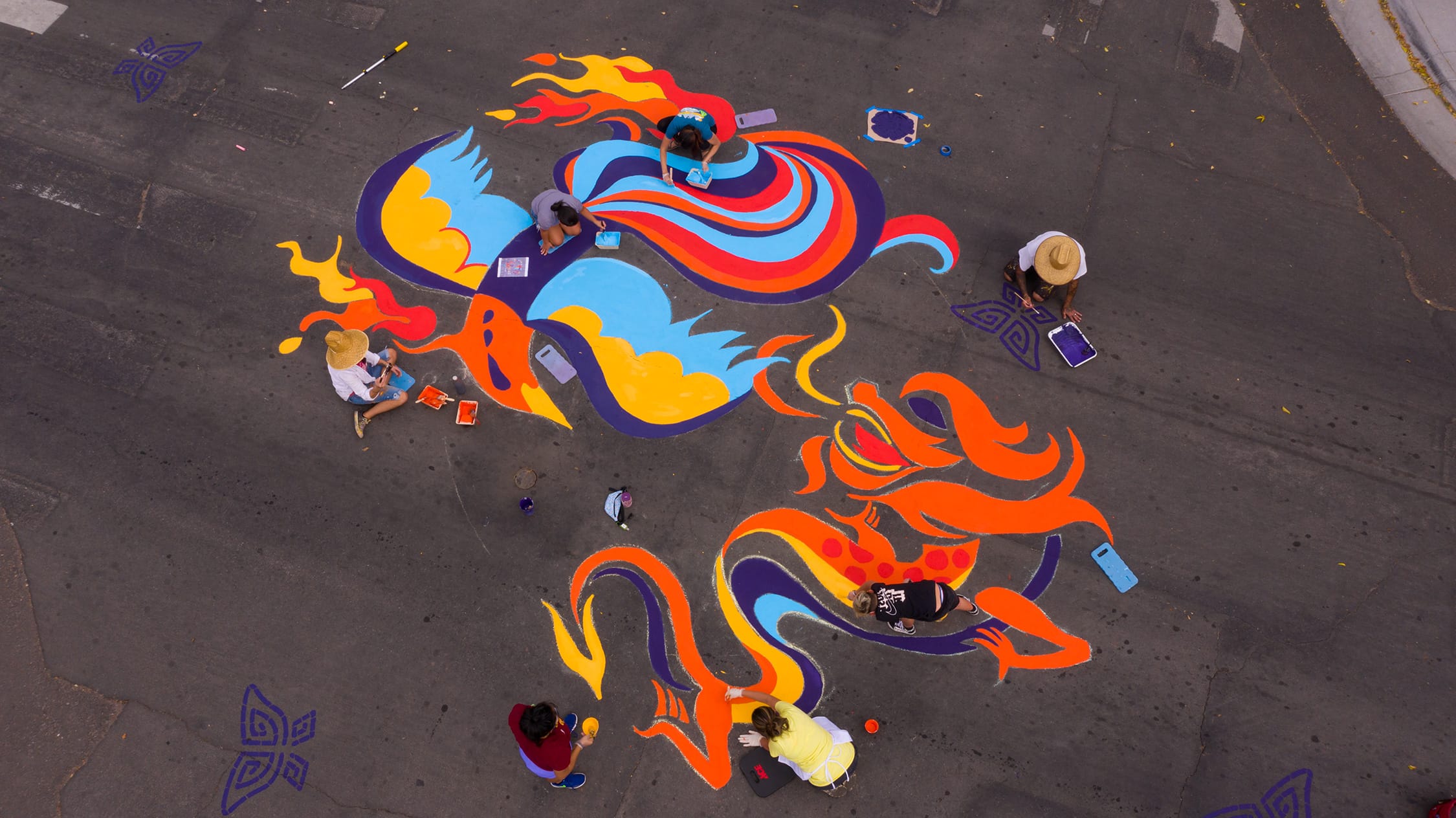
Photo: F4D Studio
Denver’s Westwood Via Verde demonstrates how a community’s vision can result in a transformational project with multiple, overlapping benefits: green infrastructure to improve water quality, increased tree canopy to reduce urban temperatures, and the celebration of cultural identity. A network of existing green spaces and proposed additions such as protected bikeways and enhanced alleys, Via Verde also engaged local artists, who created colorful street murals celebrating the neighborhood’s Asian-American and Hispanic roots. “I was reading about fires and their cultural significance,” says contributing artist Kayla Gilbert, “and learned that in Chinese feng shui, the phoenix and dragon are used together to symbolize harmonious communication.” The resulting art is a perfect nod to the community engagement and open conversation that lead to great parks and outdoor spaces. Support our work in Colorado.
Feeling Inspired?
All of these places—and many more—are protected thanks to Trust for Public Land supporters. Join us in our mission to bring the profound benefits of equitable access to the outdoors to millions of people across America.
Amy McCullough is senior writer and editor for Trust for Public Land and managing editor of Land&People magazine. She is also the author of The Box Wine Sailors, an adventure memoir.
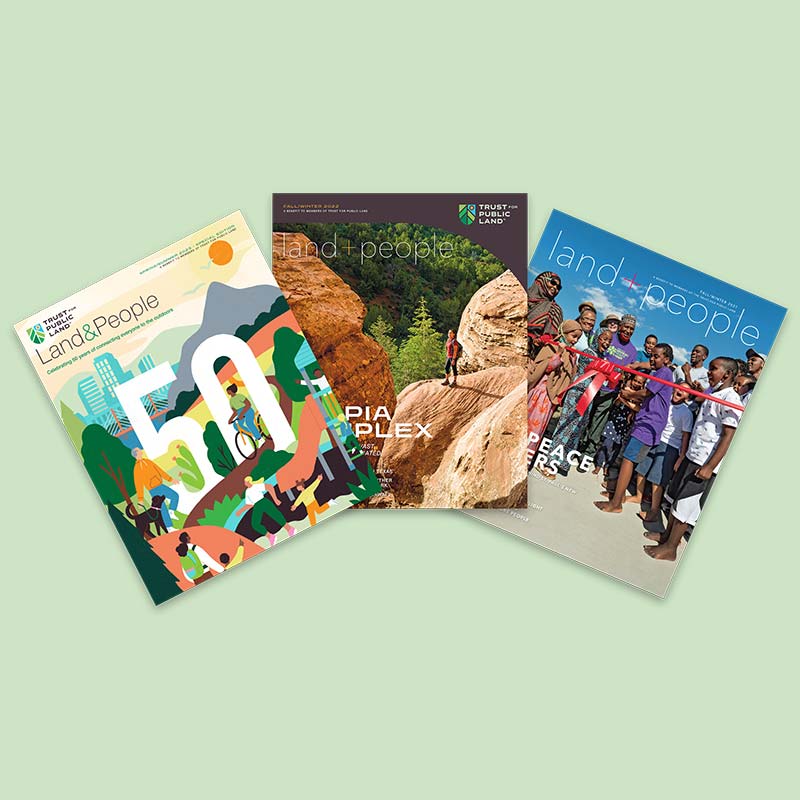
Donate to become a member, and you’ll receive a subscription to Land&People magazine, our biannual publication featuring exclusive, inspiring stories about our work connecting everyone to the outdoors.

